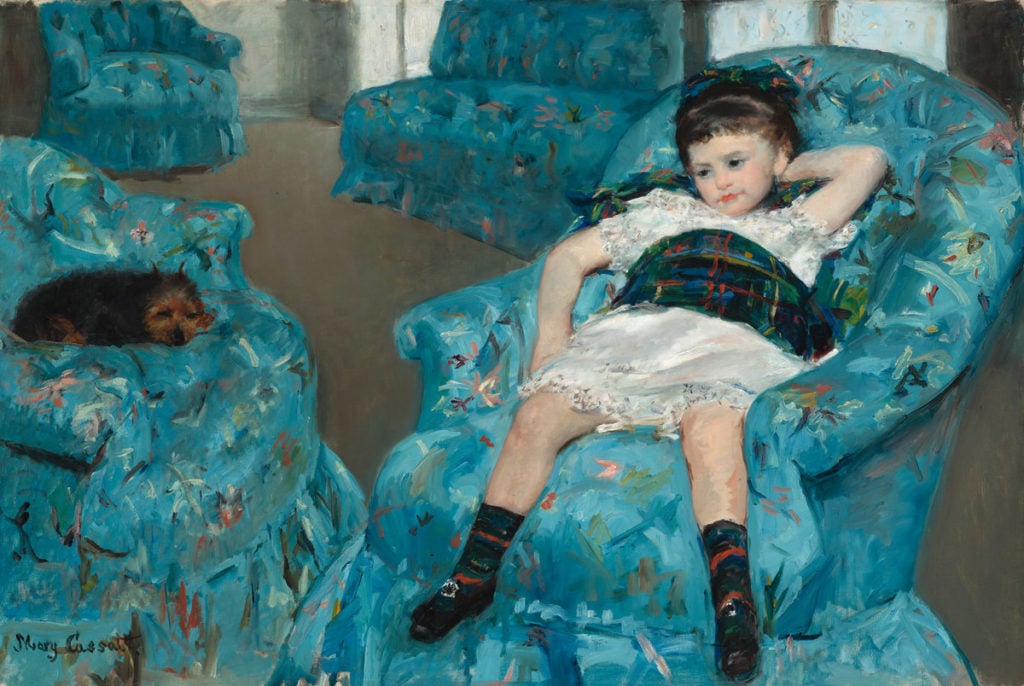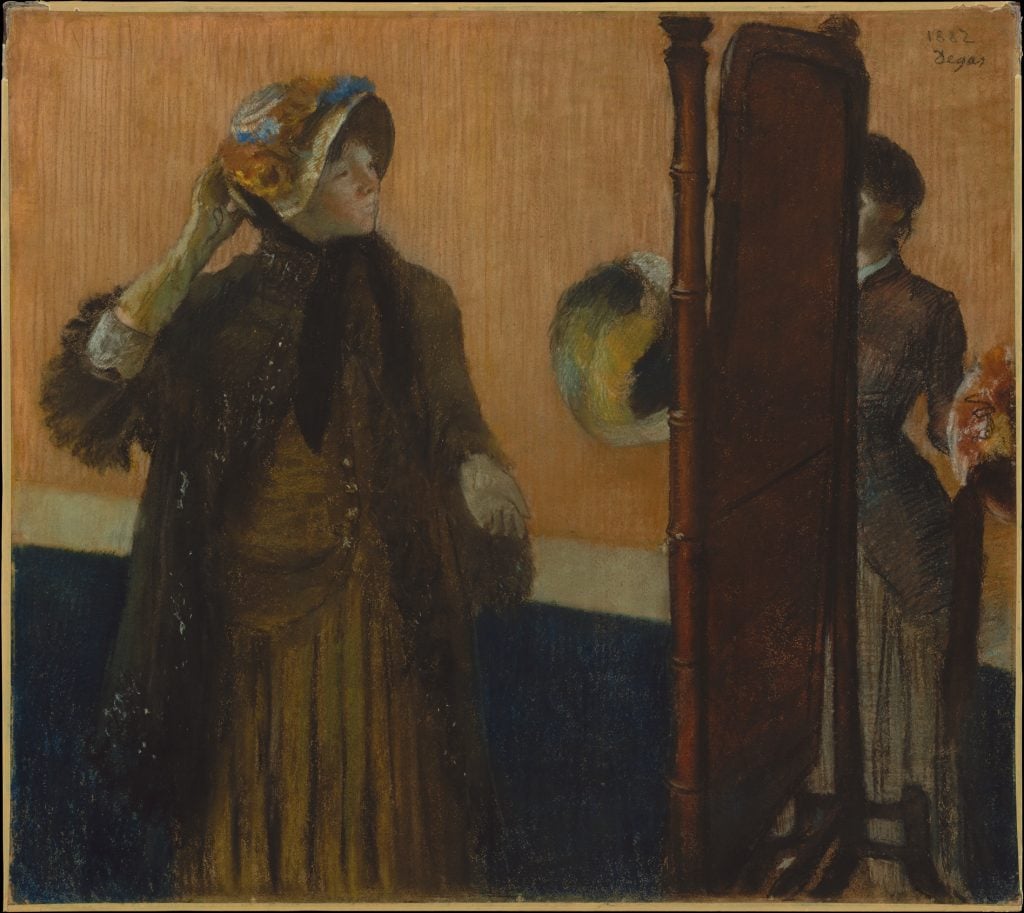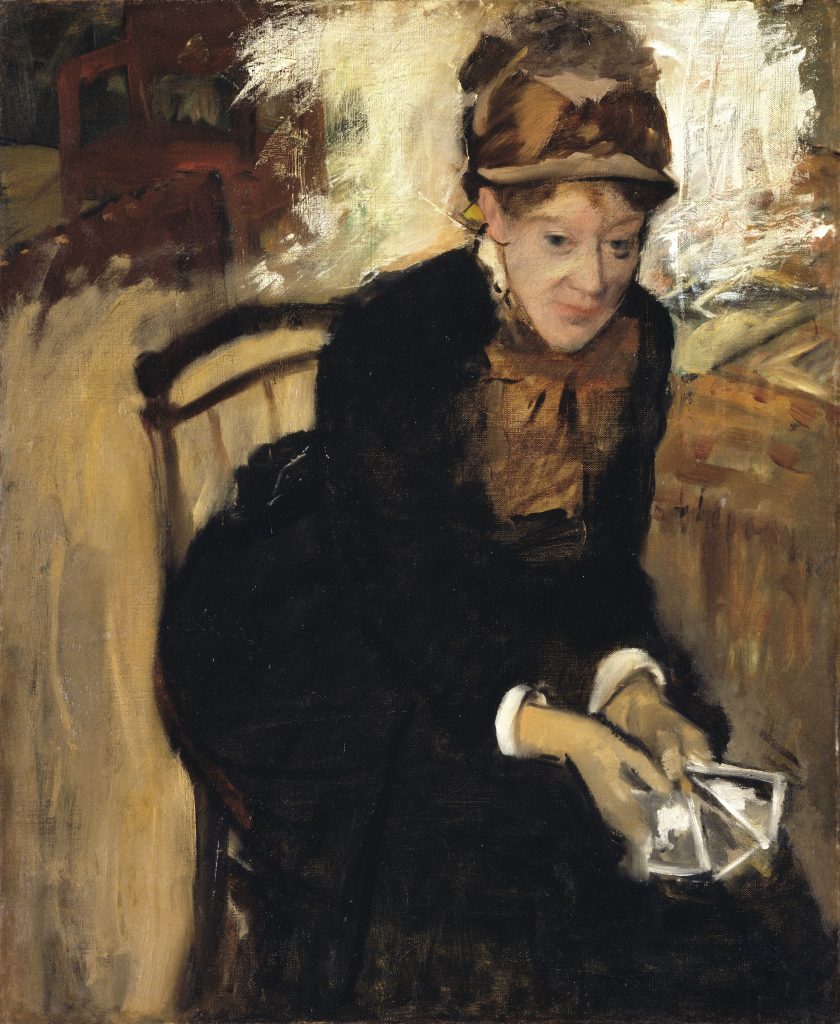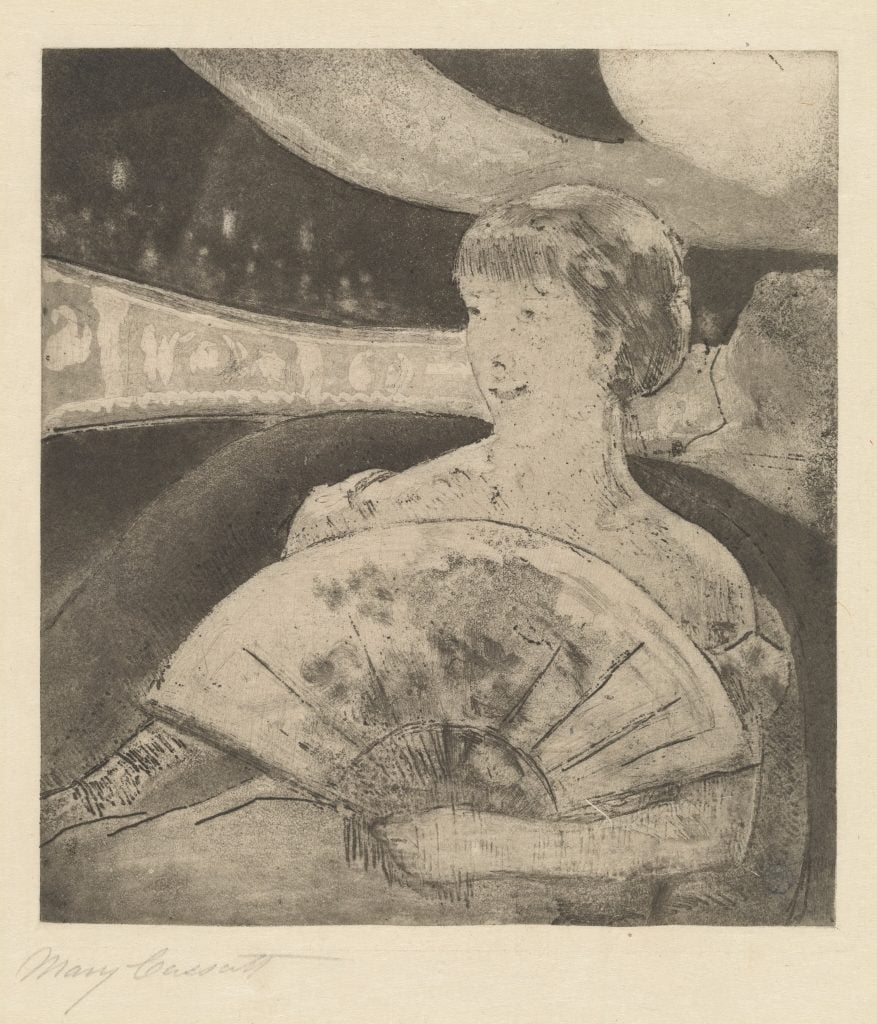Art World
Art Bites: The Tumultuous Friendship Between Mary Cassatt and Edgar Degas
The pair of Impressionists clearly influenced each other's groundbreaking work.

In 1875, Mary Cassatt was strolling along Boulevard Haussmann when a pastel drawing in a shop window caught her attention. “It changed my life,” the American expatriate would later say. “I saw art then as I wanted to see it.”
The pastel was by Edgar Degas, already a prominent figure in the Parisian art scene, and all the more so following his part in the debut Impressionist exhibition a year earlier.
Cassatt was no slouch herself. Barred from enrolling in the École des Beaux-Arts, she’d been taught privately by its masters on-and-off since arriving in the French capital in 1866, although the Franco-Prussian War got in the way. By 1875, she had exhibited five times at the Paris Salon.
As chance would have it, Degas had admired Cassatt’s 1874 entry, an oil painting depicting enigmatic woman wrapped in a green-gold shawl, and is said to have told the artist Joseph-Gabriel Tourny, “here is someone who feels as I do.”
His intuition was correct: in 1877, Tourny introduced the two, thereby launching a fast and intense friendship. Despite a 10-year age gap and having grown up on different continents, the pair had much in common. Both came from affluent banking families, both were unmarried, and, most importantly, both were hungry to explore a new type of painting.

Edgar Degas, At the Milliner’s (1882). Photo: courtesy the Metropolitan Museum of Art.
They kept studios near one another, which was convenient as women were prohibited from frequenting the avant-garde’s rendezvous of choice: le café. Cassatt was seeking to break from the academic and genre painting she’d spent a decade mastering and found a partner in Degas. By the end of 1877, she had joined the Impressionists, a term, incidentally, both disliked. They preferred “Independents,” naturally.
Within a year, Degas’s influence was clear. Cassatt’s paintings grew looser, their colors lighter, their subjects less restrained. Most notable, perhaps, is Little Girl in a Blue Armchair (1878). The plane is tilted, the chairs’ vibrant turquoise dominates, and the girl appears as naturally disposed as her canine companion. The sitter was the daughter of a friend of Degas and subsequent x-rays show he laid some instructional brushwork on the scene’s corner window.
Did Cassatt appreciate Degas’s hands-on approach? Yes and no. She was flattered that the artist she considered the greatest of the era was interested in her work. He was, as she put it “the only man I know whose judgment would be a help to me.” Still, Degas could be blunt, patronizing her both as a woman and an American.

Edgar Degas, Mary Cassatt (c. 1880–84). Photo: VCG Wilson/Corbis via Getty Images.
Nonetheless, the influence went both ways. For starters, Cassatt modeled for Degas, as in 1882’s At the Milliner’s and numerous earlier drawings. More importantly, Cassatt was the first to experiment with metallic paints, typically applied on craftwork, and encouraged Degas to try it himself. Portrait after a Costume Ball (1879), for instance, shows Degas using them to generate the rushed excitement of a crowd. The piece was exhibited at the fourth Impressionist exhibition of 1879.

Mary Cassatt, In the Opera Box (No. 3) (1880). Photo: Courtesy National Gallery of Art, Washington.
Inspired by the financial success of the exhibition, the two worked on a journal of original prints together, titled Le Jour et la Nuit. The black-and-white images focused on the play of light and shadow and though Degas eventually dropped the project, it proved Cassatt’s entry into soft ground etching, a skill she would go on to master as a print maker.
The journal’s abandonment caused a rift in the relationship, one encouraged by Cassatt’s mother who had relocated to Paris. In the absence of letters or diary entries, some have imagined a romantic entanglement. Tantalizing, no doubt, but the relationship seems best captured as Degas did in his only painting of Cassatt: as an equal.
What’s the deal with Leonardo’s harpsichord-viola? Why were Impressionists obsessed with the color purple? Art Bites brings you a surprising fact, lesser-known anecdote, or curious event from art history. These delightful nuggets shed light on the lives of famed artists and decode their practices, while adding new layers of intrigue to celebrated masterpieces.





